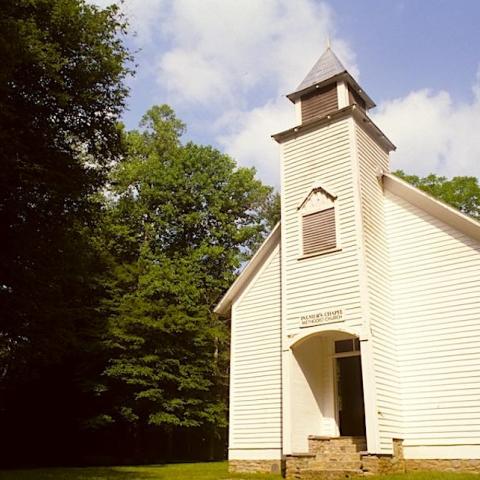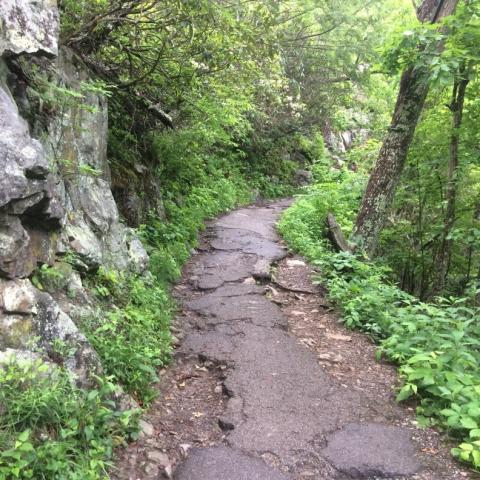
Sharks in the waters of Cape Cod National Seashore are just one of the unseen dangers that lurk in the national parks/Kurt Repanshek
At first, the water was cold to the touch, seemingly too cold to dive in. But once we got in up to our knees, and then our waists, diving in did the trick, and the Atlantic surf at Cape Cod National Seashore felt just fine. Jumping those waves last week with my brother brought back memories of laughter-filled and sun-baked summer vacations on the Jersey shore so many decades ago.
We were aware of the dangers, and not just those of being pounded into the seabed by a wave. Just a month ago I had written a story about great white sharks in the waters off the cape, and how to enjoy a beach vacation without encountering one. Last week I regularly checked the Sharktivity app to see if any sharks were in the Wellfleet area, and we kept an eye out for seals. And we saw seals riding the crests of the waves. Not a big herd, but now and again one popping its head out to watch us watching them.
After about 45 minutes in the water, we called it a day and headed up for dinner. But we returned the next morning, last Friday, and again spent about 30-45 minutes in the curling Atlantic under a radiant sun. At times the currents pushed me up the shoreline, and I swam, kicking my legs and pulling with my arms, to get back to where we started. The thought of a shark definitely entered my thoughts, and I quickly scanned the water for a fin. But we enjoyed the swim without incident, and celebrated the end of summer there on the cape.
A bit more than 24 hours later, and not much more than a half-mile up the beach, a 26-year-old Massachusetts man was enjoying the Atlantic much the same way my brother and I did. He was out in the water, riding the waves on his boogie board, reportedly wearing a wetsuit and swim fins, no doubt kicking his legs from time to time in the water, and likely laughing from the joy of riding waves. And a shark cruising along the Newcomb Hollow Beach noticed, and attacked, inflicting tremendous bites that led to Arthur Medici's death despite efforts by many on the shore to save him.
About a week before the shark attack, a 30-year-old Tennessee man was in the woods of Great Smoky Mountains National Park searching for ginseng plants. It's illegal to harvest the plants and their roots, which can command upwards of $800 a pound, but the lure of that payoff no doubt convinced William Lee Hill, Jr., that the risk of a citation from a ranger was worth it. What he might not have figured on was being attacked by a 175-pound black bear.
While an investigation was continuing this week to determine whether the bear did indeed kill the man, the possibility of such an attack, and the attack at Cape Cod by what was presumed to be a great white shark, demonstrate the harsh, often overlooked, or minimized, risks we take when we enter the National Park System.
Yes, park landscapes are incredibly beautiful, and they offer many recreational outlets. But they also can be dangerous places and possess dangers that we must be cognizant of. It's easy, for the sake of self-preservation, to decide not to do a handstand on the lip of the Grand Canyon, or to kayak into a national lakeshore without a life vest, or to dip a toe into one of Yellowstone's hot springs. Not going into the woods or into the ocean because of an unseen threat in the form of a bear or a shark are decisions more difficult to weigh because we don't see those dangers and have come to enjoy those places.
Even today, in the wake of Mr. Medici's death, knowing that I could just have easily ended up as a shark meal at Cape Cod, gives me pause and left wondering, "What if?" And while the thought of what might have been still sends shivers through me, knowing that there are sharks and bears and mountain lions and other wildlife that pose a danger in the parks is satisfying, too. We need to be kept off balance by nature, to appreciate its significance, to accept -- and respect -- the wildness it holds.
These recents deaths in the park system are difficult to understand and tragic. But clearly, they should also remind us of the dangers that reside in the parks. We mustn't sanitize the parks of those dangers. Wildlife are among the many incredible aspects of the parks. They must remain so, for their majesty, for what they bring to the ecosystems and, if nothing else, to remind us that we are not alone at the top of the food chain.




 Support Essential Coverage of Essential Places
Support Essential Coverage of Essential Places







Comments
Agenda 21 in action. Enjoy.
Great article... we often forget that wildlife has a purpose and were here first. And inspite of the danager our parks are there to enjoy all of it. Thank you for bring that to our attention.
Alice Liedl
You nailed it. I found it especially ironic that you mentioned "dip a toe into one of Yellowstone's hot springs" because I'd just finished reading about the bozo who used Old Faithful for a toilet and then laid down and peered over the edge. If there was ever a time for the geyser to forget schedule and have a premature eruption...
Another poster on this forum said, in part: "...great disservice was done by our government by taking people's land and turning that into parks .( such as ( Cades Cove ) I,and many others drive through there and see beautiful meadows and pastures being allowed to grow back into forests.What is the beauty in that ?"
I guess if you don't see the beauty in having at least some lands that are still as their creator made them, I probably couldn't find the words to help you understand. And suppose the government had not acquired those lands for a park. By now the original owners would likely have sold it for a Walmart, a sports arena, a Mickey D's. Well, maybe they'd have built a zoo, too, so you could take your grandkids to see the bears and explain how they used to roam freely but not now. Better if they dont ask why!
Sadly, the bear had to be destroyed even if it didn't actually kill the man; once a bear has decided that humans are tasty, it's too late. Relocating it would just move the threat from Point A to Point B. As someone already pointed out, bad contacts between animals and humans almost always wind up with the animal getting the worst of it.
Even our national parks are still kind of a manufactured experience. There are roads, stores, restaurants, lodging, campground, etc., although the attempt is to not make it like Disneyland. They've at least tried to preserve as much as they can, while still giving the visitor the opportunity to use trails or facilities that aid in the visit. Still - our concept of national parks is different than perhaps elsewhere. Right now we can see the cables at Half Dome or the chains going up Angels Landing. These are the products of a previous era. They wouldn't be allowed if they weren't already there. I have friends from China. They look at Half Dome and without any sense of irony say that if anything like it were in China, there would already be a gondola to the top. Their concept of a national park involves more of human beings controlling the environment.